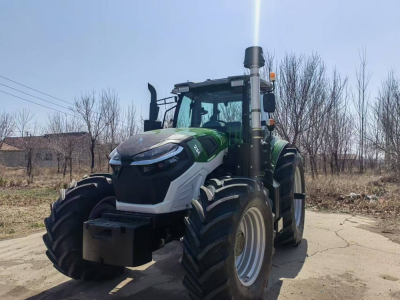Principles of driving a tractor
The operating principle of a tractor largely depends on the synergistic effect of its power plant and transmission. The following are the basic principles of tractor operation:
1.Power System: Tractors are usually equipped with an internal combustion engine, which generates power by burning a fuel such as diesel or gasoline. The engine works by drawing in a mixture of air and fuel, compressing it, and then igniting it, creating a high-pressure gas that pushes the piston into motion.
2.Transmission: The power generated by the engine is transmitted to the driveshaft through the transmission. The tractor transmission regulates speed and torque, allowing the tractor to operate efficiently in a variety of operating conditions. The transmission also includes clutches and differentials that control the speed of the wheels on each side during cornering.
3.Traveling system: The wheel or track system of the tractor is used to provide traction. The wheels rotate with the help of a drive axle, and the tractor can move over various terrains.
4. Implements: Tractors are usually equipped with various implements such as plows, seeders, etc., which are attached to the rear of the tractor either through the power take-off shaft (PTO) or directly to the rear of the tractor to carry out agricultural operations.
5.Control systems: The driver controls the operating state of the tractor using the steering wheel, gas pedal and brakes. Many modern tractors also feature electronic control systems that improve control accuracy and ease of operation.
Thanks to the coordinated work of these systems, the tractor is able to perform agricultural tasks such as tillage, planting seeds and applying fertilizers, increasing productivity.






